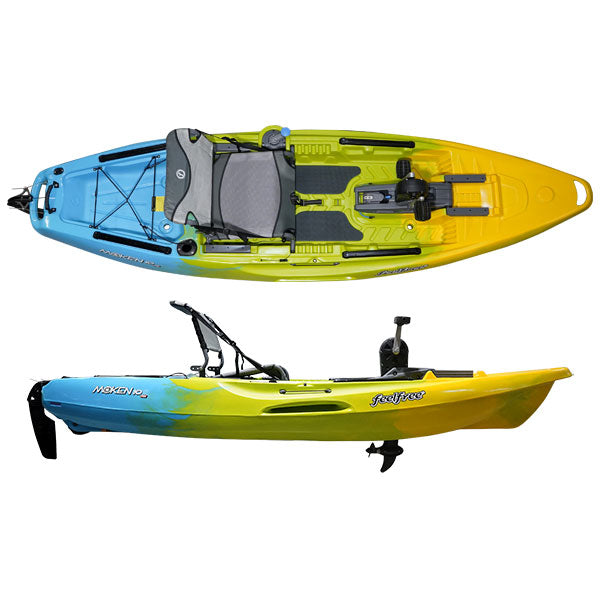
Feelfree Moken 10 PDL Fishing Kayak
Length: 10'4" | Width: 35" | Weight: 98lbs (with drive) | Carrying Capacity: 425lbs

Fishing kayaks have come a long way from the days of simple paddling. With the introduction of pedal-drive systems, anglers now have a hands-free, efficient, and stable way to navigate the water while focusing on what matters most — catching fish. If you’re considering upgrading to a fishing kayak with a pedal drive, we'll share our top reasons you'll be happy you did and then our favorite propeller and find drive fishing kayaks.
At a glance, here our top reasons you should upgrade to a pedal drive kayak:
There is a lot to consider when purchasing a fishing kayak with a pedal drive. Beyond the benefits mentioned above, there are two primary types of pedal drives: Fin drives and propeller drives. Let's break down the two pedal drive types, go over why you should consider upgrading to a pedal drive and then take a look at some of our favorite propeller and fin drive kayaks.
Two primary types dominate the market: fin drives and pedal drives. Both offer hands-free kayaking and efficiency over traditional paddling, but each has its own advantages and drawbacks. If you're considering a pedal-powered kayak, understanding the differences can help you make an informed decision.
Fin drives, popularized by Hobie’s MirageDrive system, use flexible fins that move back and forth beneath the kayak, mimicking the motion of a fish’s tail. These drives provide smooth and efficient movement through the water.
Fin Drive Pros
Fin Drive Cons
Pedal drive systems operate like a bicycle, with rotating pedals that power a small propeller underneath the kayak. This mechanism provides a more traditional, direct-powered movement.
Prop Drive Pros
Prop Drive Cons
1. Hands-Free Operation
One of the biggest benefits is that you can propel the kayak using your feet, leaving your hands free to cast, reel, or manage your gear. While paddling and fishing is possible, it can be cumbersome and difficult to properly manage your kayak and rod when fighting a fish. A good pedal drive allows the angler to both propel their kayak and quickly steer while fighting a fish, especially in current.
2. Better Speed and Efficiency
Pedal drives allow for more speed with less effort compared to paddling. You can cover greater distances without exhausting yourself, making long fishing trips more enjoyable. One disadvantage of a kayak vs. a boat is the water you are able to cover in a given day. Fishing kayaks with pedal drives can close that gap. Another benefit is more room to battle unforseen wind or weather changes.
3. Increased Stability
Many pedal-drive kayaks are designed with stability in mind, making them ideal for standing while fishing or battling larger catches. While pedal drives don't directly play a role in your kayak's stability, they are typically included on kayaks with wider platforms with heavier weight capacities that do play a role in your kayak's stability. Learn more about kayak stability from our recent podcast Big vs. Little Fishing Kayaks.
4. Quiet and Stealthy
Unlike motorized boats, pedal kayaks are quiet and won’t spook fish, allowing you to get closer to your target without disturbance. Paddling alone can make lots of noise as well whereas electic trolling motors or properly maintained pedal drives are more stealthy. Additional factors play a role such as 'deadening your deck' in areas where impacts are made. Check out this discussion by a Kayak Anglers Resource about deadening the deck of your kayak to be quieter on the water..
5. Still great exercise
Many anglers navigate from a boat to a kayak to increase their level of physical activity. One of the greatest benefits of kayaking in general is the exercise you get while enjoying nature as it was intended. You get to see new places not often visited while reaping the benefits of movement. Adding a pedal drive makes you more efficient and offers you the ability to cover more ground while still getting exercise.
An affordable alternative to adding a motor
Adding an electric motor has grown in popularity in the past few years. With more demand, more and more motors for kayaks are entering the marketplace. While motor prices are becoming more competitive, it is still an all-in proposition that is too far out of the budget. Pedal kayaks are a middle ground to upgrade from paddling without going "all-in" on a motor. There are many options available that can fit many budgets. Let's take a closer look at some!

Length: 10'4" | Width: 35" | Weight: 98lbs (with drive) | Carrying Capacity: 425lbs
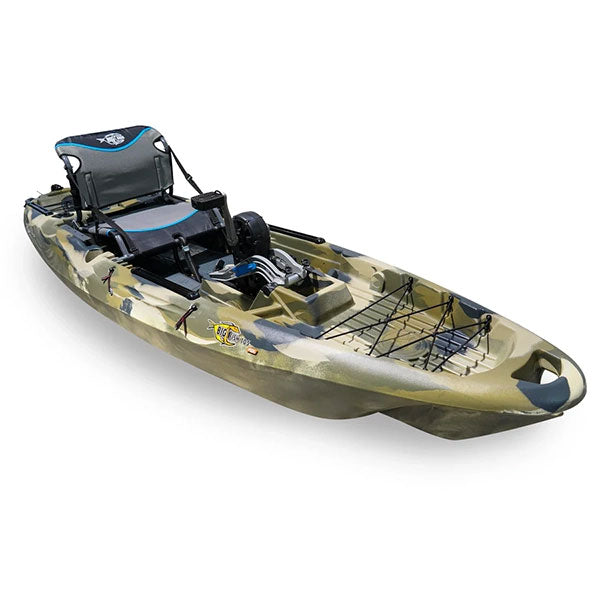
Length: 10'6" | Width: 33.25" | Weight: 120lbs (with drive) | Carrying Capacity: 350 lbs
Length: 9'11" | Width: 33" | Weight: 77lbs | Carrying Capacity: 400lbs

Length: 11'6" | Width: 36" | Weight: 90lbs | Carrying Capacity: 450lbs

Length: 11'5" | Width: 34.5" | Weight: 85lbs | Carrying Capacity: 425lbs

Length: 12'7" | Width: 35" | Weight: 107lbs | Carrying Capacity: 450lbs
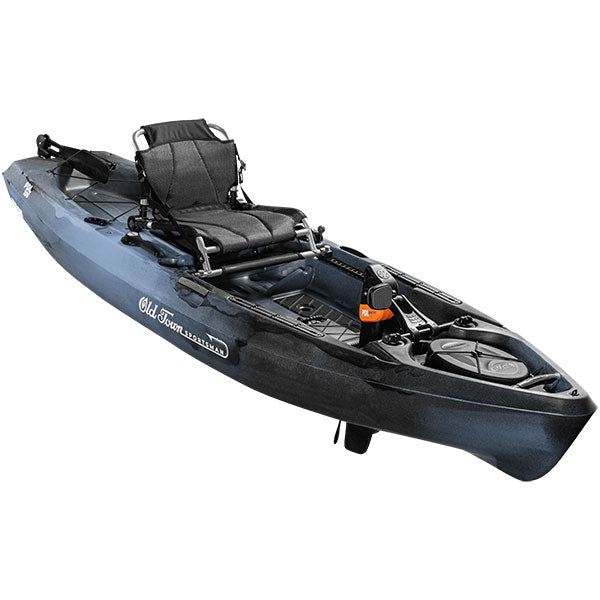
Length: 10'6" | Width: 36" | Weight: 107lbs | Carrying Capacity: 450lbs

Length: 12'2" | Width: 38" | Weight: 115 lbs | Carrying Capacity: 450 lbs
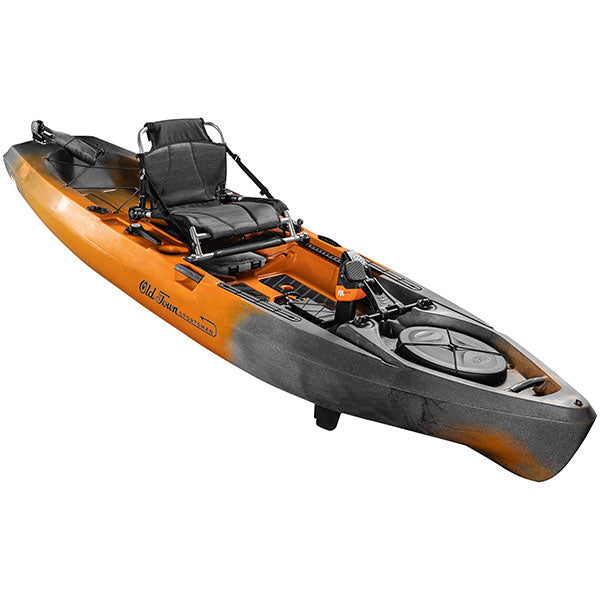
Length: 12' | Width: 36" | Weight: 116lbs | Carrying Capacity: 500lbs
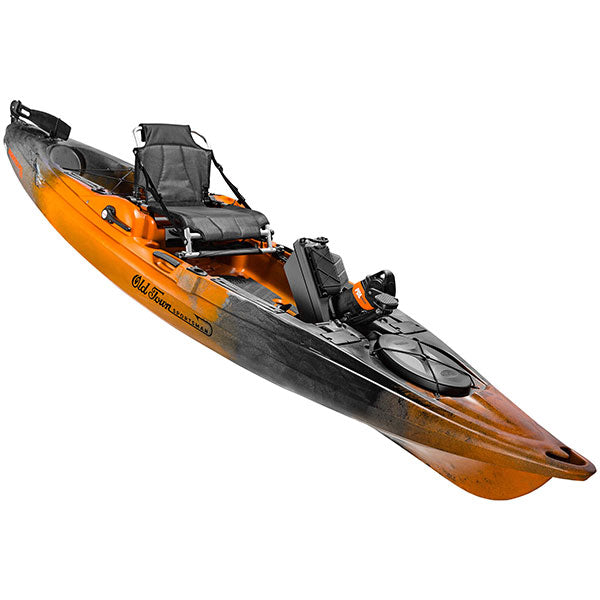
Length: 13'2" | Width: 36" | Weight: 132lbs | Carrying Capacity: 500lbs
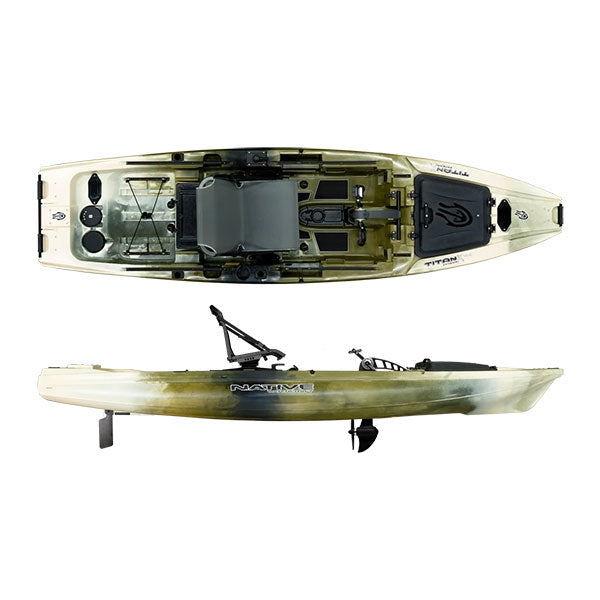
Length: 12'8" | Width: 40" | Weight: 138lbs | Carrying Capacity: 500lbs
Length: 9'9" | Width: 33" | Weight: 85lbs | Carrying Capacity: 515lbs
Length: 9'11" | Width: 33" | Weight: 77lbs | Carrying Capacity: 400lbs
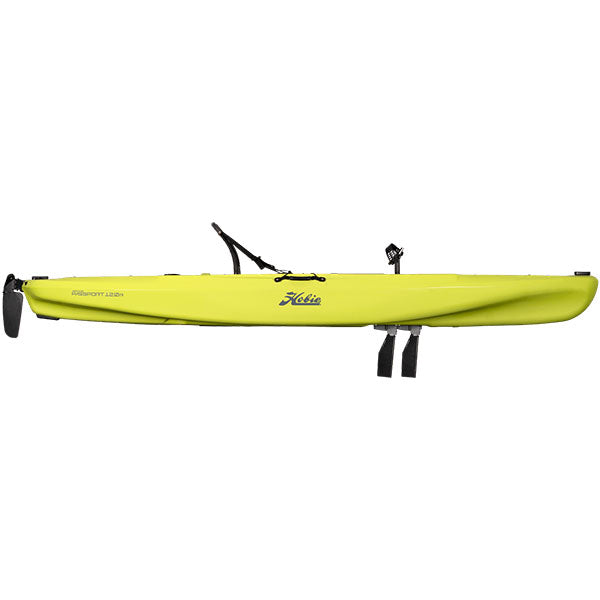
Length: 12'| Width: 34" | Weight: 83lbs | Carrying Capacity: 400lbs
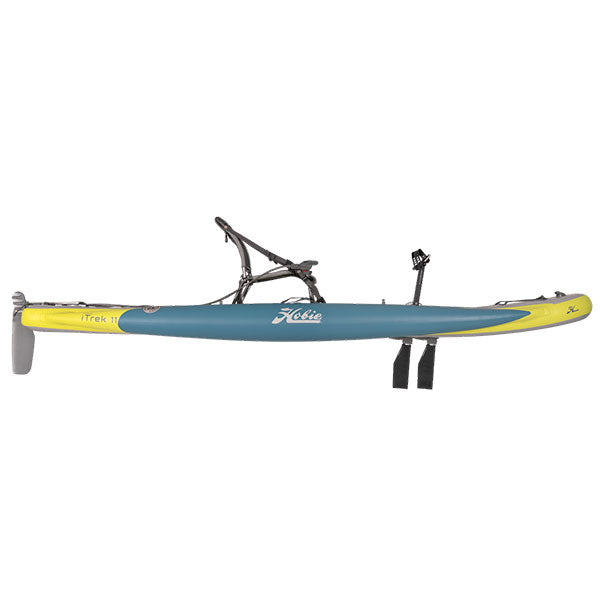
Length: 10'8"| Width: 40" | Weight: 44lbs | Carrying Capacity: 400lbs
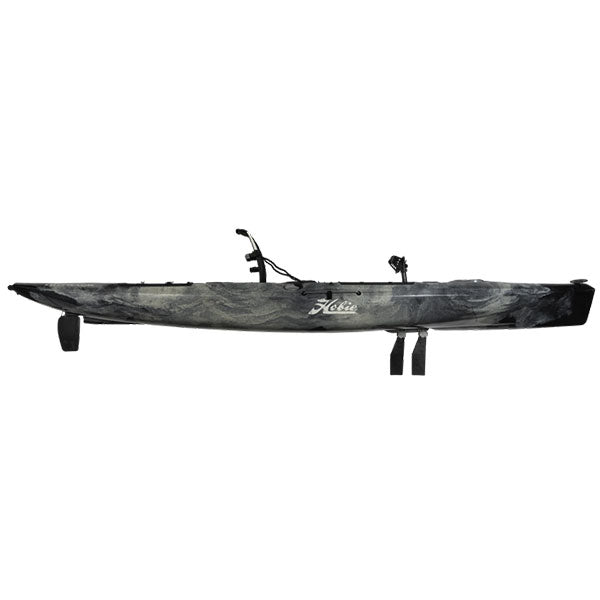
Length: 12'9" | Width: 34" | Weight: 103lbs | Carrying Capacity: 425lbs
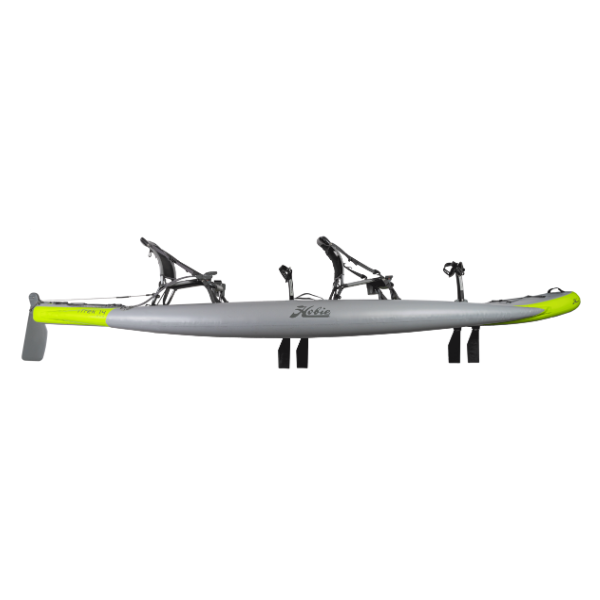
Length: 13'8" | Width: 44" | Weight: 73lbs | Carrying Capacity: 600lbs
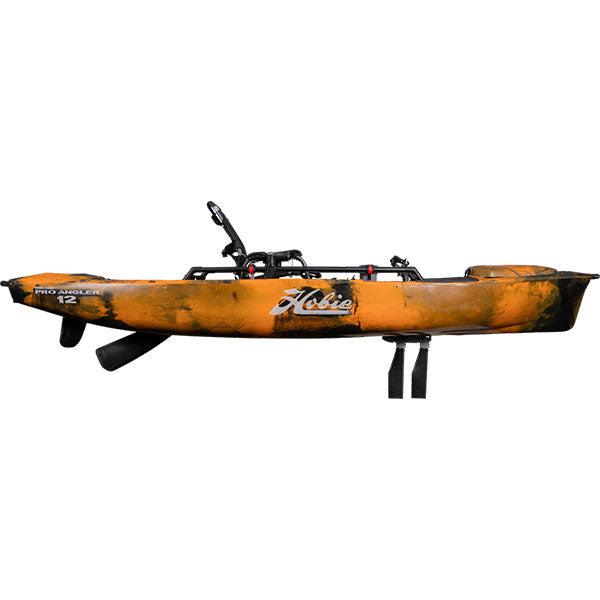
Length: 12" | Width: 36" | Weight: 128lbs | Carrying Capacity: 500lbs
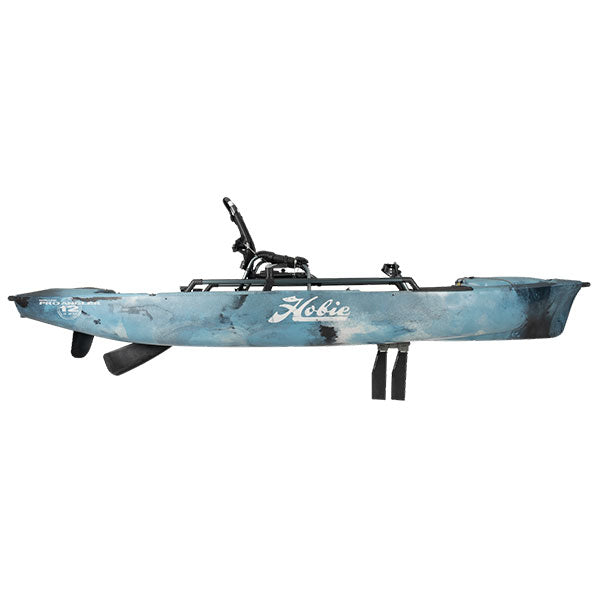
Length: 12" | Width: 36" | Weight: 132lbs | Carrying Capacity: 500lbs

Length: 13'8" | Width: 38" | Weight: 144.5lbs | Carrying Capacity: 600 lbs
It is easy to get wide eyes when dreaming of your perfect kayak setup. We see some of the craziest setups around in our line of work. But, those kinds of advanced setups with all the bells & whistles are not necessary for everyone. Sometimes, it is easier to take fellow kayakers' word for it rather than a retailers. That's why we created the Kayak Anglers Resource - a community of kayak anglers who share their experiences, ask questions and give honest reviews and assessments of kayaks and accessories. We can share our expertise until we are blue in the face, but a fellow anglers words often mean more.
Here a few great examples of how kayak anglers are helping other kayak anglers make better decisions on their purchases:

Kayak Black Friday Sales start now! Check out our best kayak deals available on Black Friday that include Fishing Kayaks, Motors and kayak accessories. We share our 10 best fishing kayak and accessory Black Friday deals as well as resources to help make your decision easier.

Improving your fishing kayak's storage & organization is a constant process. Storage accessories boil down to four main categories: Crates, rail accessories, seat storage and dry bags. We walk through each type and share our favorite kayak storage and organization accessories.

What is Camino Journey? Camino Journey is CAJO kayaks — an all new entry to the fishing kayak market. CAJO kayaks are built serious anglers & pleasure paddlers alike. With a focus on using every inch of their kayaks CAJO makes the most of your deck space with innovative new accessories and built-in features.